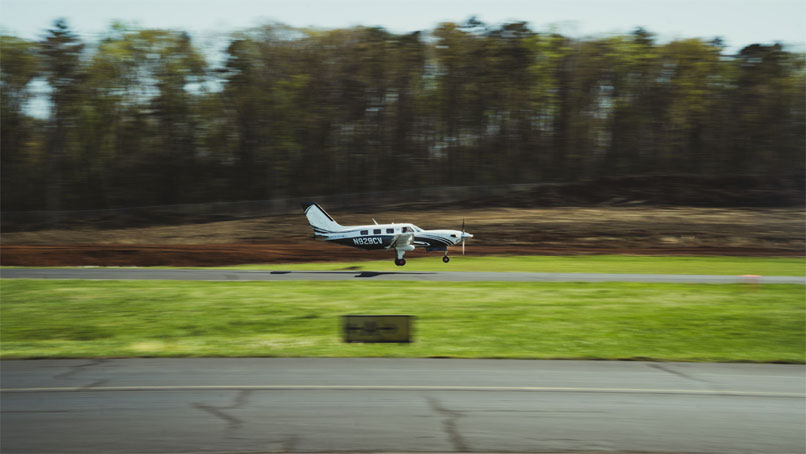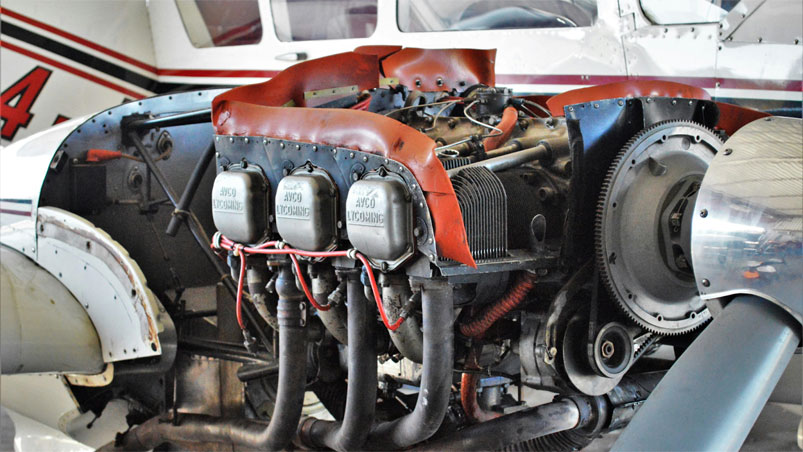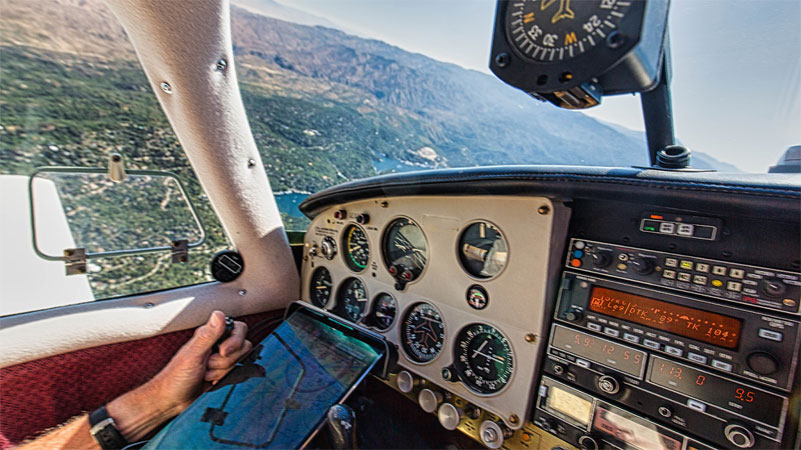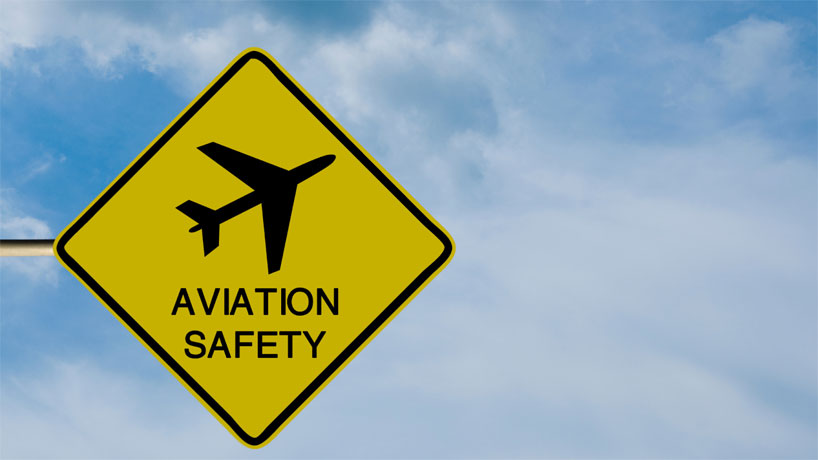Author: Carlos García
In a past episode of The James Spearman Show, filmmaker and pilot Dan Millican joined James to share some hard-won lessons about aviation safety. Their conversation wasn’t about regulations or textbook definitions. It was a real, honest look at what pilots actually face, especially those flying older or used aircraft.
From missed inspections to underestimating maintenance realities, Dan opened up about the challenges he’s faced.
Here’s what stood out most from their conversation about safety, discipline, and what general aviation pilots can do to fly smarter.
How Dan Millican and James Spearman Think About Aviation Safety
What is aviation safety according to pilots who’ve been there
When we hear the term aviation safety, we might think of the Federal Aviation Administration, big data sets, or commercial operations. But for pilots like Dan and James, it comes down to something more: discipline and responsibility.
James has said it clearly to me:
“You have to build the habits before you need them. If you’re scrambling mid-air, that’s too late.”
This kind of aviation safety mindset isn’t about perfection. It’s about repeatable habits that reduce risk, whether that’s checklist use, aircraft maintenance, or knowing when not to fly.
Why is safety important in aviation, especially for GA owners
As James puts it, when we discuss aviation safety, "The airplane doesn’t care who’s flying it. It just reacts to inputs."
That humility drives home the reality and pilots carry the full responsibility for safety when they're on board and on the ground. Especially in general aviation, where you're often flying solo or without a second crew member, those small habits become the entire safety net.
Is aviation safe for personal flying today?
Both pilots agree, yes, aviation is safe when approached with preparation and the right attitude. But they also noted that safety doesn’t come from owning the newest plane or installing every gadget. It comes from learning, listening, and staying sharp.
According to the AOPA Air Safety Institute, pilot decision-making and mindset are consistently the most influential factors in accident prevention, not aircraft age or equipment level (AOPA, 2024). In fact, the McSpadden Report highlights that most GA accidents stem from human factors, reinforcing that ongoing proficiency and sound judgment are key to staying safe in the air (AOPA, 2022).
What Flying Safety Really Means When You’ve Learned the Hard Way

Dan’s story of learning flying safety through costly experience
When Dan bought his Cessna 210, he was excited, but “underprepared”. Like many first-time owners, he faced unexpected challenges in the logbooks, misunderstood maintenance needs, and underestimated the complexity of operating a high-performance aircraft.
He later reflected on one of his early mistakes that reshaped how he thinks about flying safety:
“Early on in my airplane ownership I pushed an IFR... I should not have been doing that approach. It was foolish... I landed shaking a little bit... I have a habit of having questionable judgment... I try to really err on the side of superior judgment.”
Dan admits that his confidence outpaced his knowledge at first. It wasn’t recklessness, it was a lack of awareness about what he didn’t yet know. In hindsight, he sees how judgment, not just skill, is what keeps pilots safe.
Flying safety vs driving, what the statistics show vs what pilots feel
Flying safety statistics often show that flying is safer than driving, especially when measured per mile. But both James and Dan emphasized that the numbers don’t matter if the mindset isn’t right.
A moment of distraction in a car might cost you a fender. In the air, the margin is thinner. That’s why flying safety requires more than good intentions, it takes preparation.
According to USAFacts, the fatality rate for air travel is just 0.003 deaths per 100 million miles traveled, compared to 0.57 deaths per 100 million miles for passenger vehicles, making flying statistically far safer per mile. Yet pilot training experts and safety analysts consistently point out that human factors and decision-making account for most general aviation incidents, reinforcing that mindset and preparation are the true linchpins of safety (Pilot Institute | General Aviation News).
How safe is flying in older, used aircraft?
The short answer? It depends on the airworthiness, not the age.
James pointed out that a 50-year-old airplane that’s been maintained well and flown regularly can be safer than a newer one with spotty logs. The key is documentation, inspection schedules, and proactive maintenance.
Safety Habits That Make a Real Difference

Airplane safety tips James and Dan recommend for all pilots
Here are a few that came straight from the episode:
- Don’t rush your preflight checklist
- Review logbooks before every major trip
- Know your airplane’s normal, “feel the flap,” as James puts it
- Have someone you trust do a second look, especially before buying
These aren’t just airplane safety tips, they’re ways to build a personal culture of care.
Who is responsible for aviation safety when you own the aircraft
James didn’t mince words: if you own the aircraft, aviation safety starts and ends with you.
Whether you're flying a Cirrus, a Piper Cherokee, or a beat-up Cessna, the moment you take the left seat, you’re not just flying. You’re managing the safety, airworthiness, and readiness of that aircraft.
James and Dan both emphasized that this goes far beyond logging hours. It’s about making smart maintenance decisions, planning backup options, and knowing when to delay or cancel a flight. Dan shared how over time, he stopped pushing schedules and started building habits that respected the process.
It’s a mindset shift: from just being a pilot to being a responsible aircraft owner—and that shift makes all the difference.
General aviation safety depends on consistent discipline
“Flying is a system,” Dan said. And systems need discipline. It’s not about fear. It’s about understanding that every skipped check, every shortcut, is a safety hazard waiting to happen.
Why Maintenance Discipline Is Central to Safe Flying

What does an aviation maintenance technician do for your safety
A good aviation maintenance technician doesn’t just fix problems. They spot the things you might overlook.
At Spearman Aircraft, James emphasized this relationship:
“If you bring us in before you buy, we can save you money, and headaches.”
James stressed the value of using an unbiased technician, not the seller’s usual mechanic, especially during pre-buy inspections. Familiarity can cause issues to be missed, while a fresh set of eyes may catch serious red flags. Dan echoed this, warning that buyers often fall in love with a plane too quickly and rush the process. Now this doesn’t mean James or Dan wants you to get someone else, they just share the value of following these tips when buying a plane.
Together, they emphasized that a sharp technician can uncover logbook errors, hidden damage, or deferred maintenance that could cost you tens of thousands. It's not just about finding a mechanic, it's about choosing one who’s objective, experienced, and on your side.
Understanding your aircraft annual inspection due date
Skipping or delaying the annual inspection can void insurance, limit airworthiness, or even ground your aircraft. It’s not just a box to check, it’s part of flying safely.
Working with the right aircraft maintenance technician
James’s team treats every customer like a long-term partner. When pilots trust their technicians, they get better insight into things like:
- Top overhaul timelines
- Emerging avionics needs
- Unexpected wear patterns
That’s not a transaction. That’s a safety partnership.
How Avionics and Systems Support Safer Flying

What are the safety features of airplanes today
Modern airplanes come with impressive tools, GPS integration, digital engine monitors, even full-panel glass cockpits. But what matters is how the pilot uses them.
As Dan noted,
“You know, this is a new environment, a new atmosphere that you don't know...”
Highlighting once more that it’s not about taking shortcuts.
Why avionics upgrades matter more than people think
James explained how small upgrades, like a better engine monitor, can prevent expensive mistakes. Even something simple, like a backup attitude indicator, can make a huge difference when things go wrong.
It’s not about flash. It’s about function and safety.
What is flight safety from the pilot’s point of view
It’s awareness. It’s margin. It’s knowing when to abort a takeoff or cancel a flight.
Flight safety isn’t about impressing passengers. It’s about ensuring everyone lands.
Why Every Pilot's Safety Mindset Matters
Takeaways from Dan’s lessons in aviation safety
Dan didn’t just share problems, he shared progress. Over time, he built habits. He connected with mechanics. He stopped pushing schedules and started respecting the weather.
That’s growth and that’s aviation safety in action.
Why safety is more than a checklist, it’s a culture
Checklists help. But Dan made it clear:
“The use of checklists... being careful... I've become a lot more precise...”
That’s why building a safety culture, with your maintenance team, your flight instructor, your aviation community, is where lasting protection comes from.
The role of community in improving aviation safety
Sometimes, the best safety upgrade isn’t a new radio, it’s a hangar neighbor who says, “Hey, something sounds off with your engine.”
Dan and James both spoke to the value of listening, asking questions, and never assuming you know it all.
Final Thought
If you’re a new or experienced aircraft owner, or even just someone considering your first airplane purchase, take this episode to heart. Aviation safety isn’t a badge, it’s a practice. And the best lessons often come from pilots who’ve made mistakes and stuck around to talk about them.And remember, James loves making connections with aviation enthusiasts. Want help with a pre-buy inspection or just someone to orient you in your first aircraft send James a message.
